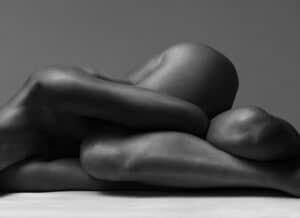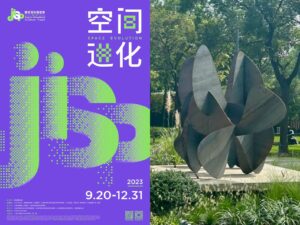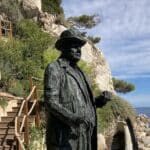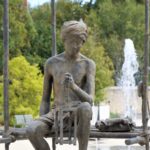Three of the gallery’s artists derive their pictorial and/or philosophical resources from calligraphy, a major art-form from the Far East and source of all other forms of expression. In this series of 3 articles we have asked each artist about the origin and the nature of this influence. Today : Hachiro Kanno.
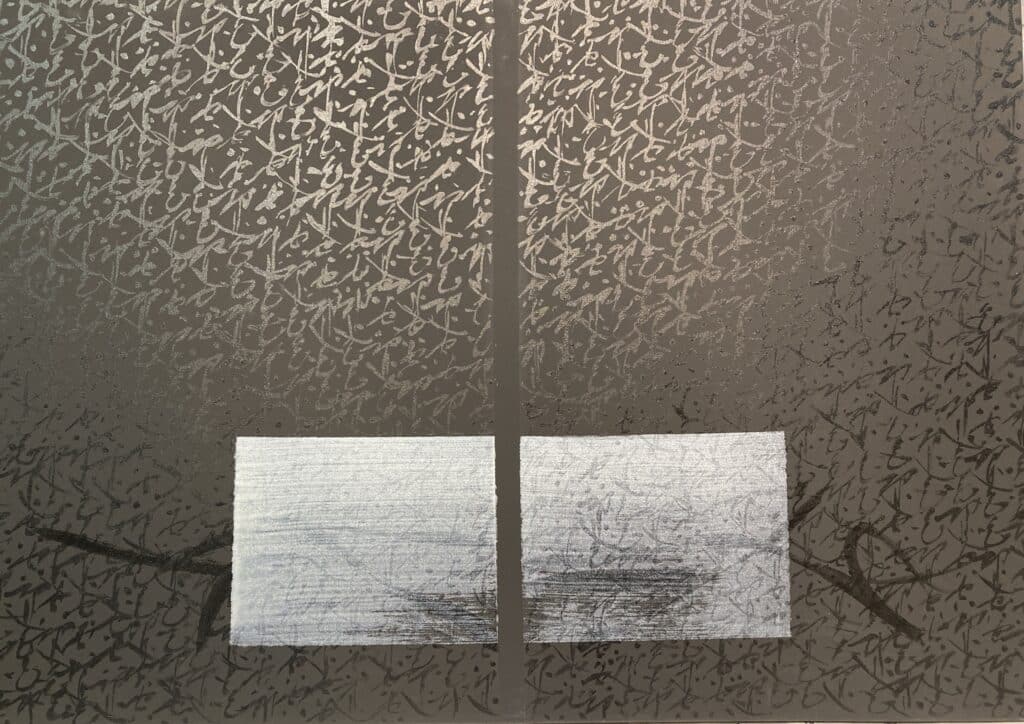
TN 853 (2023), Hachiro Kanno. Ink and acrylic on canvas, 70 x 100 cm.
Born in 1944 in the prefecture of Tochigi in Japan, Hachiro Kanno is the eighth and last child of a shintoist father who was also a reputed calligraphy master. Born “with a brush in his hands,” he decided to adopt painting and went to the Tokyo School of Fine Arts. Having a penchant for western culture he managed to get a grant to continue his studies at the Fine Arts School in Paris. At this stage he was 24 years old. Ten years later, in 1978, he was approached by American choreographer Carolyn Carlson to create the decor and the costumes for ‘L’Année du Cheval (The Year of The Horse,) at the Paris Opera. The following year he moved into the Bateau-Lavoir in Montmartre in the very workshop that Picasso occupied between 1904 and 1909. This is where he has been steadily developing, for nearly 40 years, works which synthesize these different influences : “in the union of these two cultures, writing became a painting, ” he says.
In your work, the influence of Japanese calligraphy is very obvious. What part of calligraphy’s expressive and pictorial resources interests you?
To start with, I should say that I learnt how to write watching my father, Shinto priest and well known calligrapher who used his brilliance and his talent till the ripe age of 105. It was thanks to watching him that I discovered the use of brushes, used primarily to write with, then later, for me, to draw sumi-e (Japanese paintings in black ink). For me brushes have therefore always been a means of graphic expression to honour my father or at least to attempt to, and not to shame him… Given the circumstances, as I have just explained, I got the urge to further develop my knowledge of the attributes of brushes, of all different quality and sizes.
Even the qalam, which works wonders in calligraphy, cannot rival this tool in the art of drawing. In Japan, this art, for the most part, depends on the rapidity of the strokes, which are first thought through, then executed without the least possibility of alteration. Only the long practice of calligraphy can guarantee this sureness.


Left: TN 569, Hachiro Kanno. Ink and acrylic on canvas, 100 x 65 cm.
Right: TN 570, Hachiro Kanno. Ink and acrylic on canvas, 100 x 65 cm.
How did you acquire these techniques?
To tell the truth, it wasn’t until I arrived at the School of Fine Arts in Paris, thanks to a grant from the French government, that I began to see clearer. One day the teacher said to me: What are you doing here? You already know all this. Delve into your culture. That’s where you’ll figure out your direction! I wasn’t really ready for this… At the Tokyo School of Fine Arts I was completely immersed in the “whys” and “hows” of the excellence of western artistic expression: figurative, impressionist, etc. It looked like it had all been done! Where was i going to place myself? So this advice “to return to my roots” which was like a step backwards, suddenly made total sense.
Of course, the line can be… “overly ornate” or be just the essential. This is where a long (and sometimes fastidious) practice of calligraphy comes into play. How does one go from a picture to a need to say it all in a few lines? And how does one go about expressing what I mean by ‘all’?
I have always said that I wanted my work to be the reflection of the path I have chosen for myself. If you understand, or sense that there is “something” behind or beyond it’ll mean that I have succeeded. If not it’s back to the drawing board for me. Socrates (and I am not at all comparing myself!) was right to never provide answers to his own questions. The answers were in the questions! It’s up to each of us to work them out. Shiki souk zee ku… Ku souk zee shiki: full is empty and empty is full.
Is it necessary to know Japanese calligraphy to be able to understand your work?
Absolutely not! My pictorial works are replicas of my other work: installations, performances, conferences, decor and stage setting for the opera, creation of zen spaces… It’s all like a white heron in the snow… you have to find it!
Saint Exupéry wrote “it is only with the heart that one can see rightly; what is essential is invisible to the eye.” A Genius!

To find out more about Hachiro Kanno:
> View our video interview in his Parisian workshop
> View all his works for sale on Artistics
> Read the text by Elisabeth Heil (artistic director of the Kunststation Kleinsassen, in Germany) about his works, during Hachiro Kanno’s exhibition at the Kunststation in 2015.
In the same series:
> Calligraphy and contemporary art : 3 questions for Lumi Mizutani
> Calligraphy and contemporary art : 3 questions for Zhang Hongyu


